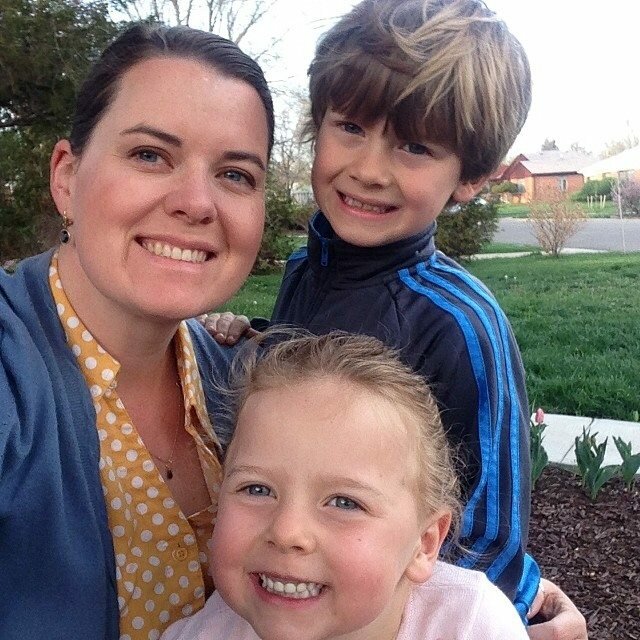By Michael Petrilli (@michaelpetrilli)
Executive Vice President at the Thomas B. Fordham Institute
In the middle of the last decade, in urban communities across America, middle- and upper-middle-class parents started sending their children to public schools again—schools that for decades had served overwhelmingly poor and minority populations. From the Capitol Hill neighborhood of Washington, D.C., to northwest Denver, to Brooklyn, and beyond, white families in particular have come back to local schools—not in dribs and drabs but in droves. In one D.C. high school, students sarcastically called it “the Caucasian invasion.”
My wife and I lived in one such urban community—an inner-ring suburb outside Washington—with our two small boys, and we loved it. Still, we weren’t sure we wanted to stay for the long term. Mainly, we were concerned about its schools. They had a mixed reputation and lackluster test scores, largely due to their diverse population of students. (Research has long shown that poor and minority students tend to perform worse on standardized tests than affluent white children.) At our local elementary school, white students were a minority, and one-third of the kids were poor enough to qualify for free or reduced-price lunch from the federal government.
We very much liked the idea of our sons becoming friends with kids from other races and backgrounds, and we didn’t think we could afford private school. But we expected that our boys would be entering Kindergarten with the basics—and more—under their belts, and we worried they wouldn’t get the attention and challenge they needed. What if their teachers were focused on helping recent immigrant children learn English or giving low-income kids remedial help? What if the schools were test-prep factories, obsessed only with getting students to basic proficiency in reading and math?
To answer these questions and more, I talked to parents, educators, and experts, dug into all of the relevant research—and wrote a book in the process: The Diverse Schools Dilemma: A Parent’s Guide to Socioeconomically Mixed Public Schools. So what did I find?
There were some “pros”:
- Sending our sons to a diverse school would give them an opportunity to learn how to live in diverse twenty-first-century America.
- It would provide exciting and enriching multicultural opportunities they wouldn’t experience in a homogeneous school.
- It would reinforce our commitment to the “common school” ideal. We would be standing up to “separate but equal” and helping our sons’ poorer classmates learn more about the world than they would if segregated into schools with only other poor children.
We’d get to stay in the urban community that we love.
There were also “cons”:
- We would probably have to give up on finding a school that was progressive or artsy or unstructured. (Low-income and minority parents tend to shun such schools—and for good reason, as they tend to have a bad track record with low-income and minority children.)
- We would be taking some (small) risks with our kids’ safety and would increase the odds that they’d have one or more disruptive students in class with them, which could slow them down academically.
- If we chose a school that grouped students by performance—which might be best for our kids—the classrooms themselves would probably be largely segregated by class, if not by race.
For us, and for all parents, this is a tough call, a major life decision. It’s essential for parents to go and visit the schools they are considering.
Probably the most important thing to learn is whether the principal is a strong leader and open to tackling these vexing issues of race and class head-on. After all, it takes an extraordinary person to bring together students, teachers, and parents of diverse cultures and backgrounds and make the mix work effectively. It especially requires a ton of outreach and communication on the leader’s part. Is the principal up to this task? Does he or she even see it as part of the job? If not, that’s a big red flag. And if you are treated like a pushy parent for just trying to find out, go somewhere else, fast.
Second, you want to understand the school’s instructional strategies, particularly when it comes to serving kids who are achieving at vastly different levels. How does it group students, and how are students selected for those groups? Do the groups change much over time? If the school uses mixed grouping, how does it challenge all of its students, especially the highest-achieving ones? Likewise, what is it doing to boost the performance of its struggling students? If the school says it differentiates instruction, what evidence is there that this is for real and that teachers are up to the challenge? Ask to see the different kinds of assignments that teachers give to kids at different levels. If the school can’t provide such examples, that’s another red flag. At the middle- and high-school levels, does the school offer honors tracks or Advanced Placement courses?
Third, you want to learn how integrated the school truly is. Is there a lot of self-segregation at recess and lunch? Are people of color represented at PTA meetings? Are parents chatting with moms and dads of different races? What school-wide events are hosted to make people feel included? Is there an International Night? Are there school fairs?
Finally, trust your gut. But also be willing to admit that your gut can sometimes be wrong.
***
Here’s the good news: Regardless of which schools your children attend, they are very likely to do well. That’s because of what you are already doing as your children’s first teacher: showing an interest in their learning, reading to them, checking their homework, providing a safe and supportive environment at home, enriching their education with trips to museums and libraries and historical sites, and expecting them to go to college.
Keep doing all of that, and any school choice you make will be a good one.
Michael J. Petrilli is executive vice president at the Thomas B. Fordham Institute. He blogs at Flypaper.

 In our modern school choice system, you can choose your child’s school, but you can’t choose the parents at that school. I’m lucky to have won “the lottery” with both.
In our modern school choice system, you can choose your child’s school, but you can’t choose the parents at that school. I’m lucky to have won “the lottery” with both. |
| 







